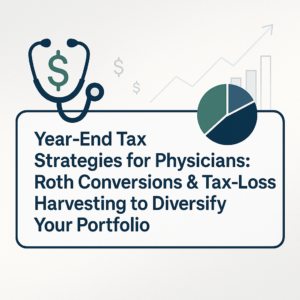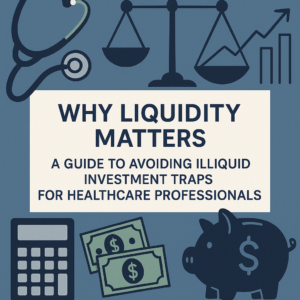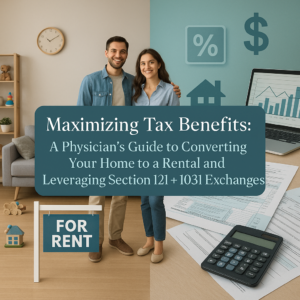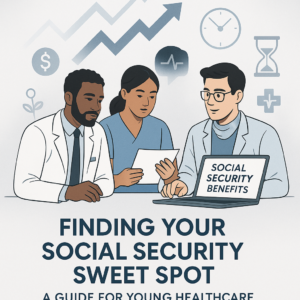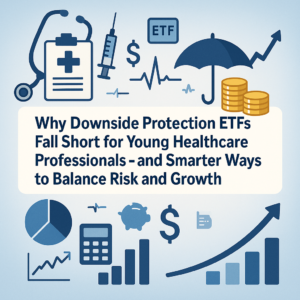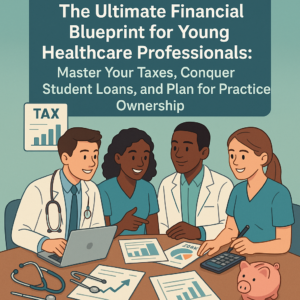Finding Your Social Security Sweet Spot: A Guide for Young Healthcare Professionals
As a physician, dentist, or other healthcare professional early in your career, you’re laser-focused on training, patient care, and building your practice. Retirement planning—including the decision of when to claim Social Security—probably feels like a puzzle for decades down the road. Yet, the timing of your Social Security claim can have a profound impact on your lifetime income, tax situation, and legacy goals.
In this comprehensive guide, we’ll explore:
- Why “delay forever” isn’t always the best strategy
- How sequence of returns risk interacts with Social Security timing
- Balancing mortality risk and break-even analysis
- Actionable steps for high-earning medical professionals
1. The Traditional Case for Delaying Benefits
Conventionally, financial advisers encourage you to wait until age 70 to claim, because your monthly benefit grows by about 8% per year after your “full retirement age” (FRA). For a dentist with a projected benefit of $3,000 at FRA—say age 67—waiting to 70 boosts that to approximately $3,720 monthly. Strong, right?
But averages can deceive. While actuarial tables assume you’ll live to 85 or beyond, they don’t capture your individual health profile, family longevity patterns, or career-related stress factors. And—crucially—they don’t factor in what happens to your retirement portfolio in the meantime.
2. Introducing Sequence of Returns Risk
Imagine two doctors, both age 67, each with a $600,000 investment portfolio and identical spending needs. One claims Social Security at 67, using the benefit as a “floor” for essential expenses and drawing only modestly from her portfolio. The other delays to 70 but must tap investments more heavily in those three years. If the market tumbles early—say a 20% drop in the first two years—the delayed claimer’s portfolio could be depleted faster, jeopardizing her ability to stay retired if markets stay weak.
Key Takeaway:
Delaying benefits magnifies sequence of returns risk, especially in volatile markets. Your personalized break-even age may differ from the average 80–82 often cited in textbooks.
3. Mortality Risk vs. Longevity Risk
Longevity risk is the fear of outliving your assets. Mortality risk is the flip side—the chance you may not live long enough to recoup the extra benefits from delaying. While a 40-year-old surgeon might have a reasonable life expectancy, consider:
- Family health history (cardiovascular events, early-onset conditions)
- Specialty-related stress levels (emergency medicine vs. dermatology)
- Work-related injury risks
For someone with elevated mortality risk factors, claiming at 67 or even 62 can provide more guaranteed lifetime income and reduce the psychological burden of “what if I don’t make it?”
4. Crafting a Personalized Claiming Strategy
Here’s a step-by-step framework tailored for high-earning healthcare professionals:
- Assess Your Health & Family History
- Gather medical check-ups, family longevity patterns, and specialty-specific risks.
- Run Your Portfolio Stress Tests
- Model early, average, and late retirements using historical market data.
- Incorporate a conservative withdrawal rate (3–4%) when delaying.
- Calculate Your Break-Even Age
- Compare cumulative benefits from ages 62, FRA, and 70.
- Adjust for taxes, cost-of-living adjustments (COLAs), and spousal considerations.
- Factor in Taxes & Cash Flow Needs
- Higher early benefits can fill gaps and reduce portfolio withdrawals (and taxable income).
- Delaying can bump you into higher tax brackets later if you also draw down IRA/Roth balances.
- Consult Your RIA Team
- A holistic view—Social Security, investments, insurance, and tax planning—is essential.
5. Common Pitfalls & How to Avoid Them
- Over‐reliance on online calculators
- Most ignore sequence risk and personal health factors.
- Deferring all the way to 70 without backup cash reserves
- Create a short‐term bond or CD ladder to cover essential spending if markets sour.
- Neglecting spousal strategies
- A higher earner’s late claim can boost survivors’ benefits—coordinate your claiming ages.
- Ignoring taxation
- Higher Social Security benefits can increase your Medicare premiums (IRMAA).
6. Next Steps for Action
Ready to refine your Social Security claiming plan?
- Visit our Our Process page to see how we integrate benefits modeling with investment management.
- Learn about our tailored Services for medical professionals.
- Meet the team and read client stories on our About Us page.
- Contact us today for a complimentary Social Security strategy session.

